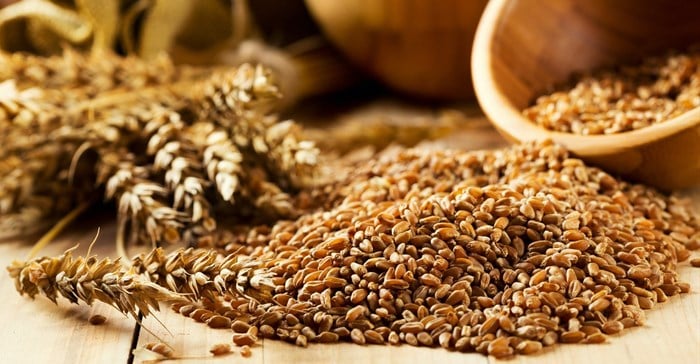
Top stories

Marketing & MediaFather, friend, icon: South Africa pays tribute to the late DJ Warras
Karabo Ledwaba 8 hours





More news





ESG & Sustainability
Better Bellville steps up recycling efforts with new e-waste drop-off sites




















Energy & Mining

The market value increased at an average annual rate of +1.4% over the period from 2014 to 2018; the trend pattern remained relatively stable, with somewhat noticeable fluctuations being observed in certain years.
The countries with the highest volumes of grain consumption in 2018 were Egypt (44 million tonnes), Nigeria (31 million tonnes) and Ethiopia (26 million tonnes), together comprising 37% of total consumption. These countries were followed by Algeria, Morocco, South Africa, Tanzania, Mali, Sudan, Kenya, Niger and Tunisia, which together accounted for a further 38%.
Driven by increasing demand for grain in Africa, the market is expected to continue an upward consumption trend over the next decade. Market performance is forecast to retain its current trend pattern, expanding with an anticipated CAGR of +2.5% for the period from 2018 to 2030, which is projected to bring the market volume to 366 million tonnes by the end of 2030.
The grain production totaled 201M tonnes in 2018, increasing by 1.6% against the previous year. The total output volume increased at an average annual rate of +1.5% from 2014 to 2018; the trend pattern remained relatively stable, with only minor fluctuations being observed throughout the analyzed period. The most prominent rate of growth was recorded in 2017 with an increase of 6.7% against the previous year.
The volume of grain production peaked in 2018 and is expected to retain its growth in the near future. The general positive trend in terms of grain output was largely conditioned by a slight increase of the harvested area and a relatively flat trend pattern in yield figures.
The countries with the highest volumes of grain production in 2018 were Nigeria (26M tonnes), Ethiopia (25M tonnes) and Egypt (22M tonnes), together accounting for 37% of total production. South Africa, Morocco, Tanzania, Mali, Sudan, Niger, Algeria, Burkina Faso and Kenya lagged somewhat behind, together accounting for a further 37%.
In 2018, the grain harvested area in Africa amounted to 125 million hectares, remaining relatively unchanged against the previous year. The average yield of grain in Africa stood at 1.6 tonne per ha, flattening at the previous year.
In 2018, the grain exports in Africa stood at 2.3 million tonnes, growing by 14% against the previous year. In value terms, grain exports stood at $720m.
South Africa represented the largest exporter of grain exported in Africa, with the volume of exports accounting for 1.2 million tonnes, which was near 52% of total exports in 2018. Uganda (471k tonnes) took the second position in the ranking, distantly followed by Tanzania (212k tonnes) and Zambia (144k tonnes).
All these countries together occupied near 36% share of total exports. Kenya (70k tonnes), Sudan (46k tonnes) and Burkina Faso (44k tonnes) followed a long way behind the leaders.
Exports from South Africa decreased at an average annual rate of -17.0% from 2014 to 2018. At the same time, Kenya (+64.3%), Uganda (+37.8%), Tanzania (+32.4%), Zambia (+10.8%) and Sudan (+3.6%) displayed positive paces of growth. Moreover, Kenya emerged as the fastest-growing exporter exported in Africa, with a CAGR of +64.3% from 2014-2018.
By contrast, Burkina Faso (-10.3%) illustrated a downward trend over the same period. Uganda (+15 p.p.), Tanzania (+6.2 p.p.), Kenya (+2.6 p.p.) and Zambia (+2.1 p.p.) significantly strengthened its position in terms of the total exports, while South Africa saw its share reduced by -57.6% from 2014 to 2018, respectively. The shares of the other countries remained relatively stable throughout the analyzed period.
In value terms, South Africa ($407m) remains the largest grain supplier in Africa, comprising 56% of total grain exports. The second position in the ranking was occupied by Uganda ($94m), with a 13% share of total exports. It was followed by Tanzania, with a 10% share.
In South Africa, grain exports plunged by an average annual rate of -13.9% over the period from 2014-2018. In the other countries, the average annual rates were as follows: Uganda (+27.8% per year) and Tanzania (+32.0% per year).
In 2018, approx. 73 million tonnes of grain were imported in Africa; increasing by 4.5% against the previous year. In value terms, grain imports amounted to $15n.
In 2018, Egypt (22 million tonnes), distantly followed by Algeria (14 million tonnes), Morocco (6.8 million tonnes), Nigeria (5 million tonnes) and Tunisia (3.5 million tonnes) were the key importers of grain, together achieving 70% of total imports. The following importers - Libya (3 million tonnes), Sudan (2.9 million tonnes), Kenya (2.4 million tonnes), South Africa (2.2 million tonnes) and Zimbabwe (1.2 million tonnes) - together made up 16% of total imports.
From 2014 to 2018, the most notable rate of growth in terms of imports, amongst the main importing countries, was attained by Zimbabwe, while imports for the other leaders experienced more modest paces of growth.
In value terms, the largest grain importing markets in Africa were Egypt ($4.1b), Algeria ($2.6B) and Morocco ($1.4b), with a combined 54% share of total imports. These countries were followed by Nigeria, Tunisia, Sudan, Libya, Kenya, South Africa and Zimbabwe, which together accounted for a further 30%.